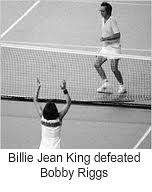The leaders of 125 nations will meet on Tuesday at the United Nations for the largest summit on the climate since Copenhagen summit that ended in collapse in 2009.
Climate change is not a far-off problem. It is happening now and is having very real consequences on people’s lives. Climate change is disrupting national economies, costing us dearly today and even more tomorrow. But there is a growing recognition that affordable, scalable solutions are available now that will enable us all to leapfrog to cleaner, more resilient economies.
The summit will be preceded by the People’s Climate March in New York City. The march is expected to draw over 100,000
By Naomi Klein, The Guardian
The truth about our planet is horrifying, but the true leaders aren’t the ones at the UN – they’re in the streets
At exactly 1pm on Sunday, the streets of New York City are going to fill with the sound of clanging pots, marching bands, church bells and whatever other kinds of noisemakers that participants of the People’s Climate March decide to bring along.
It’s being called the “climate alarm”, and the general idea is that a whole lot of people are going to make the very loud point that climate change is a true emergency for humanity, the kind of threat that should cause us to stop what we are doing and get out of harm’s way.
Is it a stunt? Well, sure, all protests are. But the mere act of expressing our collective sense of climate urgency goes beyond symbolism. What is most terrifying about the threat of climate disruption is not the unending procession of scientific reports about rapidly melting ice sheets, crop failures and rising seas. It’s the combination of trying to absorb that information while watching our so-called leaders behave as if the global emergency is no immediate concern. As if every alarm in our collective house were not going off simultaneously.
Only when we urgently acknowledge that we are facing a genuine crisis will it become possible to enact the kinds of bold policies and mobilize the economic resources we need. Only then will the world have a chance to avert catastrophic warming.
In her new book, “This Changes Everything: Capitalism vs. the Climate,” Ms. Klein outlines the need for “a new economic model to address the ecological crisis.” She joined Amy Goodman and Juan González of Democracy Now! to discuss the radical action that will be needed,
“We have not done the things that are necessary to lower emissions because those things fundamentally conflict with deregulated capitalism, the reigning ideology for the entire period we have been struggling to find a way out of this crisis,” Klein writes. “We are stuck because the actions that would give us the best chance of averting catastrophe – and would benefit the vast majority – are extremely threatening to an elite minority that has a stranglehold over our economy, our political process, and most of our major media outlets.”
Watch the livestream of the People’s Climate March on Sunday September 21 from 10:30am to 1:30pm ET via Democracy Now.


 I’ve often opined that “classical” music (also called “art” music to distinguish it from the time period) is the “rock” music of it’s age. You have the dysfunctional artists (why do you think they call them divas?), the groupies, and-
I’ve often opined that “classical” music (also called “art” music to distinguish it from the time period) is the “rock” music of it’s age. You have the dysfunctional artists (why do you think they call them divas?), the groupies, and-

 A few days ago one of the Daily Kos membership wrote a diary proclaiming the need for “a new gay rights platform,” presumably because the fight for marriage equality was over and done.
A few days ago one of the Daily Kos membership wrote a diary proclaiming the need for “a new gay rights platform,” presumably because the fight for marriage equality was over and done.